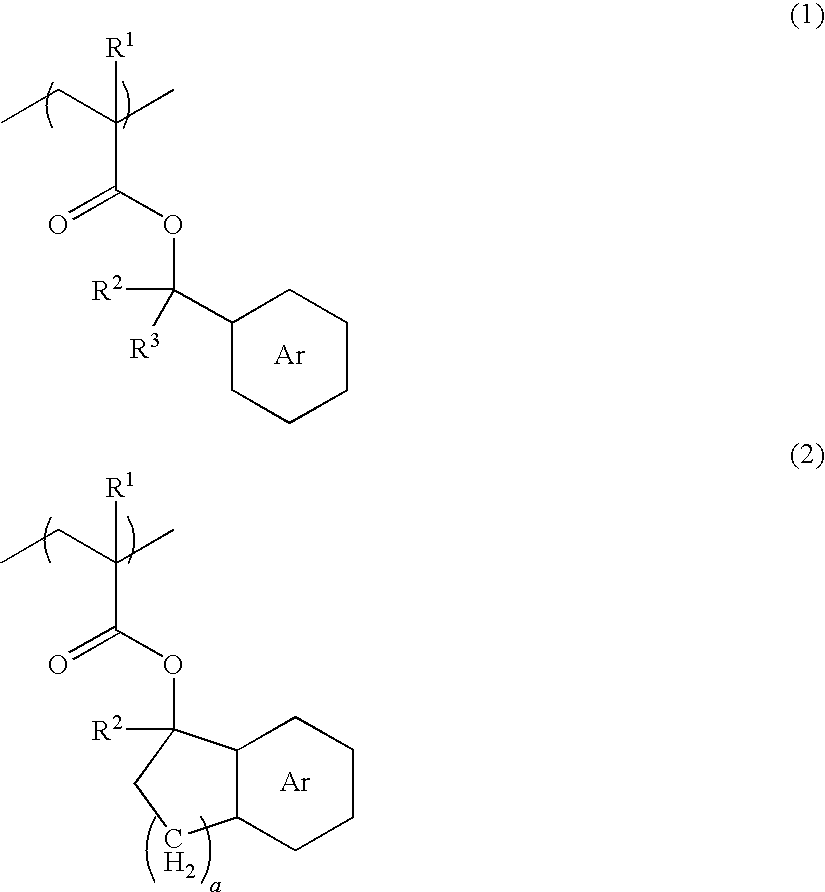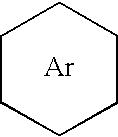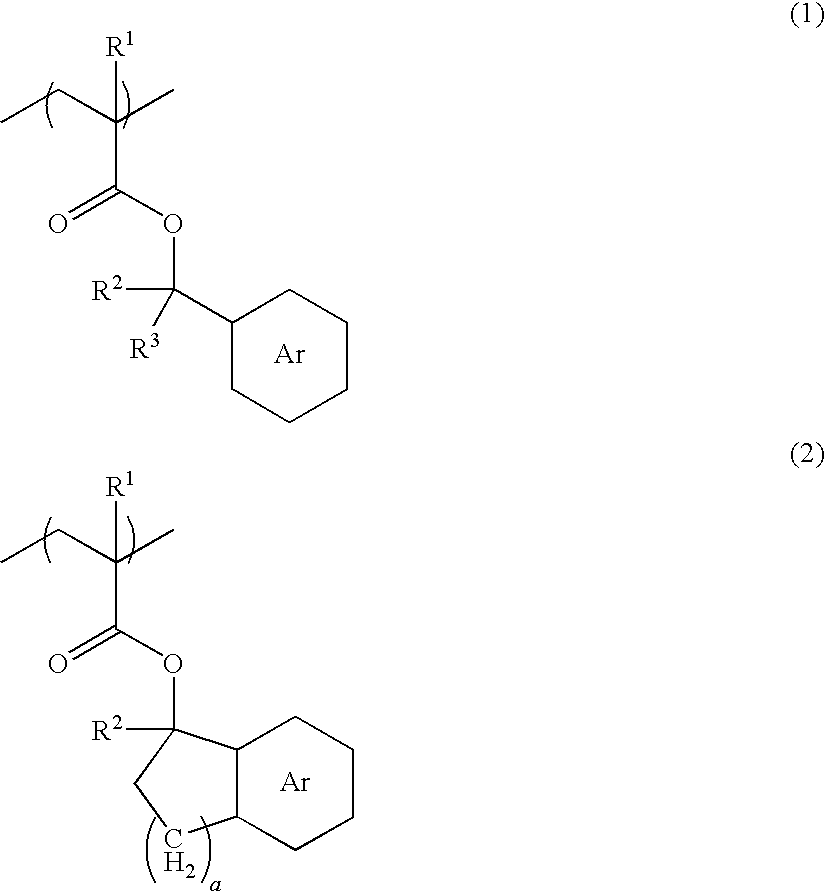Positive resist composition and pattering process
a composition and resist technology, applied in the field of positive resist composition and pattering process, can solve the problems of degrading an optical image, affecting the resolution, and affecting the resolution, so as to achieve high resolution, high resolution, and precise micropatterning
- Summary
- Abstract
- Description
- Claims
- Application Information
AI Technical Summary
Benefits of technology
Problems solved by technology
Method used
Image
Examples
synthesis example 1
[0209]A 100-mL flask was charged with 13.0 g of acetoxystyrene, 4.1 g of a monomer of formula (20) below, and 20 g of toluene as a solvent. The reactor was cooled to −70° C. in a nitrogen atmosphere, whereupon vacuum deaeration and nitrogen flow were repeated three times. The reactor was warmed up to room temperature, 1.4 g of AIBN was added as a polymerization initiator, and the reactor was further heated to 55° C., at which reaction was effected for 40 hours.
[0210]The reaction solution was concentrated to a ½ volume and precipitated in 5.0 L of methanol. The resulting white solids were filtered and vacuum dried at 40° C., obtaining 15.5 g of a white polymer. The polymer was dissolved in a mixture of 0.4 L methanol and 0.5 L tetrahydrofuran again, to which 140 g of triethylamine and 30 g of water were added. The reactor was heated to 60° C., allowing deprotection reaction to occur. The reaction solution was neutralized with acetic acid, concentrated, dissolved in 0.5 L of acetone, ...
synthesis example 2
[0216]Synthesis was carried out by the same procedure as in Synthesis Example 1 aside from using 4.6 g of a monomer of formula (21) instead of the monomer of formula (20). There was obtained 12.4 g of a white polymer.
[0217]The polymer was analyzed by 13C-NMR, 1H-NMR and GPC, with the analytical results shown below.
[0218]Copolymer Compositional Ratio
[0219]Mw=7,400[0220]Mw / Mn=1.76
[0221]This polymer is designated Poly-2.
synthesis example 3
[0222]Synthesis was carried out by the same procedure as in Synthesis Example 2 except that 2.4 g of indene was further added. There was obtained 13.0 g of a white polymer.
[0223]The polymer was analyzed by 13C-NMR, 1H-NMR and GPC, with the analytical results shown below.
[0224]Copolymer Compositional Ratio
[0225]Mw=7,000[0226]Mw / Mn=1.70
[0227]This polymer is designated Poly-3.
PUM
| Property | Measurement | Unit |
|---|---|---|
| refractive index | aaaaa | aaaaa |
| wavelength | aaaaa | aaaaa |
| wavelength | aaaaa | aaaaa |
Abstract
Description
Claims
Application Information
 Login to View More
Login to View More - R&D
- Intellectual Property
- Life Sciences
- Materials
- Tech Scout
- Unparalleled Data Quality
- Higher Quality Content
- 60% Fewer Hallucinations
Browse by: Latest US Patents, China's latest patents, Technical Efficacy Thesaurus, Application Domain, Technology Topic, Popular Technical Reports.
© 2025 PatSnap. All rights reserved.Legal|Privacy policy|Modern Slavery Act Transparency Statement|Sitemap|About US| Contact US: help@patsnap.com



